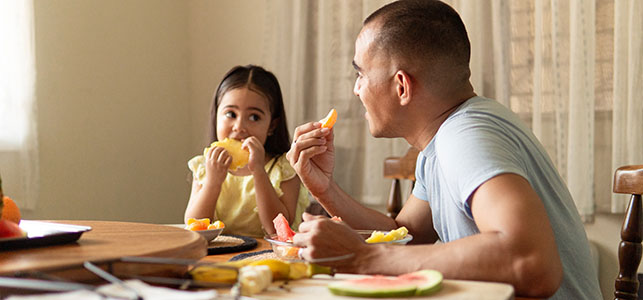
What celiac disease does to the body and how to help
Tummy troubles are common in kids. Our GI team specializes in figuring out the causes and successful solutions. One of the conditions they consider when making a diagnosis is celiac disease.
The seriousness and symptoms of celiac disease
“Celiac disease is an autoimmune condition, which means it causes the immune system to attack the body,” explained Dr. Narendra Vadlamudi. “In this particular condition, the body reacts to gluten, a protein in wheat, rye and barley. Over time, this gluten induced immune response damages the tiny finger-like projections, or villi, in the small intestine that absorb nutrients. A lack of ample nutrients can lead to a variety of symptoms and consequences.”
When kids can’t get the nutrients they need, they may experience:
- Slow growth
- Short stature
- Skin irritation and rash (dermatitis herpetiformis)
- Delayed puberty
- Damaged tooth enamel
- Liver inflammation
Symptoms of celiac disease in kids differ from those in adults and may include:
- Abdominal pain
- Bloating
- Constipation
- Diarrhea
- Gas
- Nausea and vomiting
- Stunted growth
- Tiredness
- Weight loss
Diagnosing celiac disease in kids
Talk with the pediatrician if your child has stomach pain or diarrhea that lasts two weeks or longer. Bloodwork can test for antibodies associated with celiac disease. They may also refer you to a gastroenterologist for an endoscopy – done via a thin, flexible tube with a camera inserted through the esophagus and into the stomach and intestines – to look for inflammation and damage in the small intestine. These tests will help identify if it’s celiac disease that’s causing the problems.
“Celiac disease tends to run in families. If a parent or sibling has the condition, a child has a 1 in 10 chance of developing it too,” added Dr. Vadlamudi.
What happens after a celiac diagnosis
While there’s no cure for celiac disease, following a gluten-free diet will help the body feel and function better.
Many healthy foods are naturally gluten-free, like:
- Dairy products – yogurt, most cheeses, milk
- Fruits – apples, bananas, berries, citrus fruits, grapes, peaches, pears
- Grains – buckwheat, corn, quinoa, rice
- Legumes – beans, chickpeas, lentils
- Nuts (without added flavorings) – almonds, cashews, peanuts
- Proteins – beef, chicken, eggs, fresh seafood, tofu, turkey
- Vegetables – bell peppers, broccoli, carrots, cauliflower, cucumber, green beans, kale, spinach
Gluten-free flour alternatives can be used to make some family-favorite foods, such as pizza, pasta and pancakes. There are lots of gluten free products available at the supermarket too! It’s always a good idea to check labels for information about additives or cross contamination during production/packaging.
Going gluten free can be a balancing act at first but will become more routine with time. A registered dietician can provide guidance on getting enough essential nutrients, like fiber, calcium, folate, and vitamins D and B when eliminating gluten.
Gluten-free restaurants in Richmond
More and more restaurants are offering gluten-free menu items, loved by kids and adults! Some of our favorites in the Richmond area include:
- Buttermilk and Honey for chicken tenders, sandwiches and more
- Mellow Mushroom for celiac approved pizzas
- Natalie’s Taste of Lebanon for many Mediterranean choices
- Peter Chang for plenty of Chinese dishes
- Secret Sandwich Society for sandwiches with gluten-free bread
- Shyndigz for gluten-free desserts that rotate weekly
- Toast at The Village for wings, fried pickles and other items made in a safe fryer
Call to confirm gluten-free menu options and pricing before visiting to make sure they’ll have something for everyone in your party.
Life can still be delicious with celiac disease!
